Natural light floods through large windows lining nearly every wall of the Trappist Caskets production facility in northeast Iowa, wrapping it in view of New Melleray Abbey’s 3,400 acres, 1,200 of which are abundant in timber.
The storage racks at Trappist Caskets, designed and fabricated by master welder Brother Dennis, stretch six caskets tall between the concrete floor and the rafters that span the length of the shipping bay. This area manages the ebb and flow of production and shipping. The goal is to keep them full at all times. Today, there are several vacancies—demand has been very high.
At first glance, the racks are overwhelming for their enormity, and the realization that each space represents an individual awaiting preparation for burial adds more gravity.
From the production facility’s modest beginnings in the monks’ barns to the far reaching ties maintained through prayer and memorial tree plantings for those buried in Trappist Caskets and their families—the span of their work is remarkable.
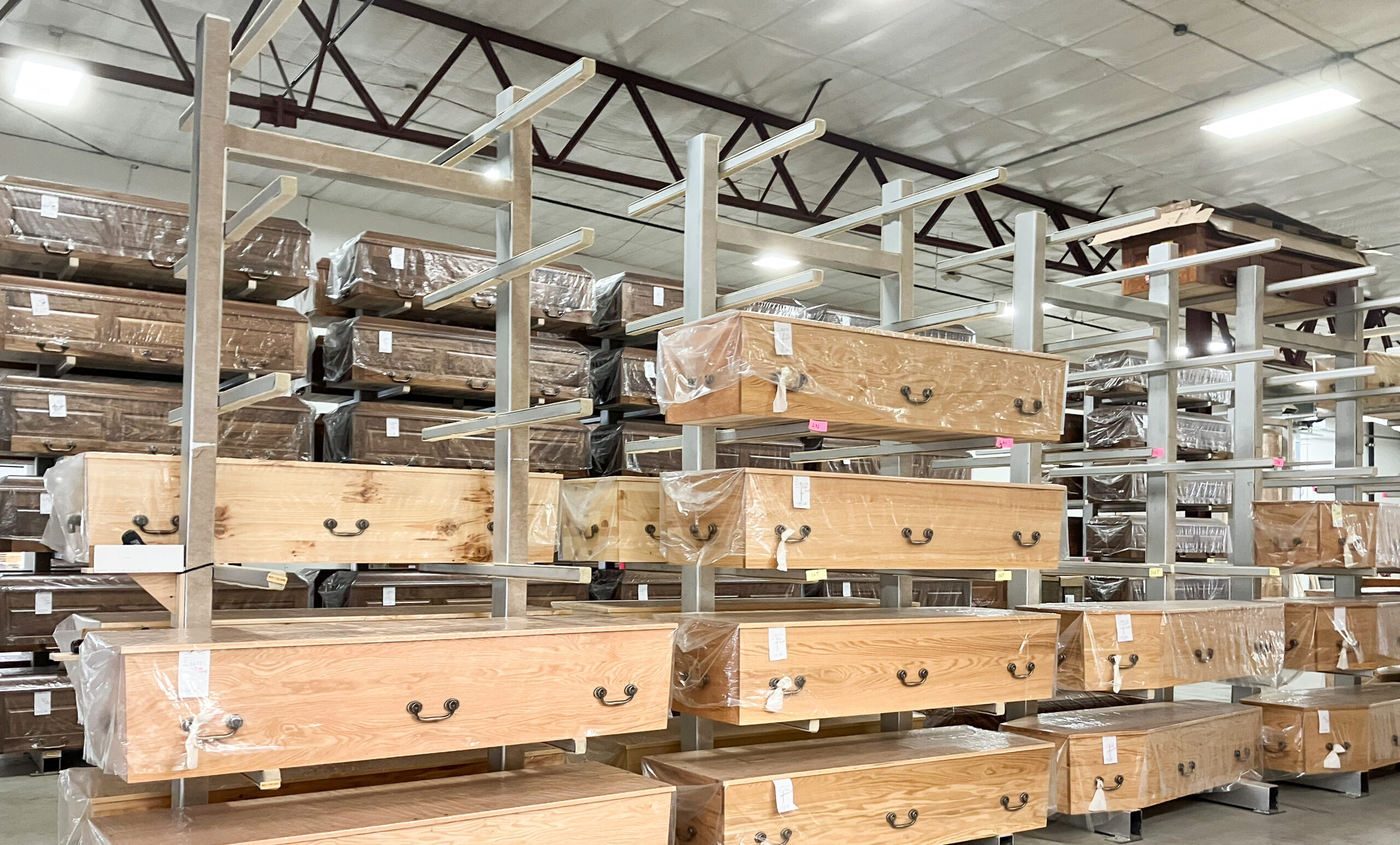
A wealth of midwestern natural resources, combined with the Trappist monks of New Melleray’s need to financially support themselves through their own labor and maintain a life steeped in prayer, inspired its entry into casket manufacturing in 1999.
Each casket crafted by monks and employees at this facility in Peosta, Iowa, captures unrepeatable characteristics in walnut, oak, cherry or pine grain. But one casket on the shipping bay’s floor this Tuesday stands out. Its design and far deeper red draw the eye quicker than all other cherry caskets in the shelving.
The lone casket served its owner first as a coffee table, its cherry wood aging in open air for 20 years. Rings left by glasses mark the lid’s finish. With upholstering completed this morning, and its lid newly reinforced, this old cherry casket is on its way to the funeral home so as to serve the priest in death who purchased it. He will be buried in it within the next few days. Paul Pankowski, Production Manager for Trappist Caskets, notes it isn’t uncommon for caskets to be purchased and turned into bookshelves, wine racks, and coffee tables, then for owners to eventually be buried in them.
The design for these have evolved since the cherry wood one was built. Recent interest in green burials necessitates biodegradable joinery and alternate handles, meaning designs continue to evolve.
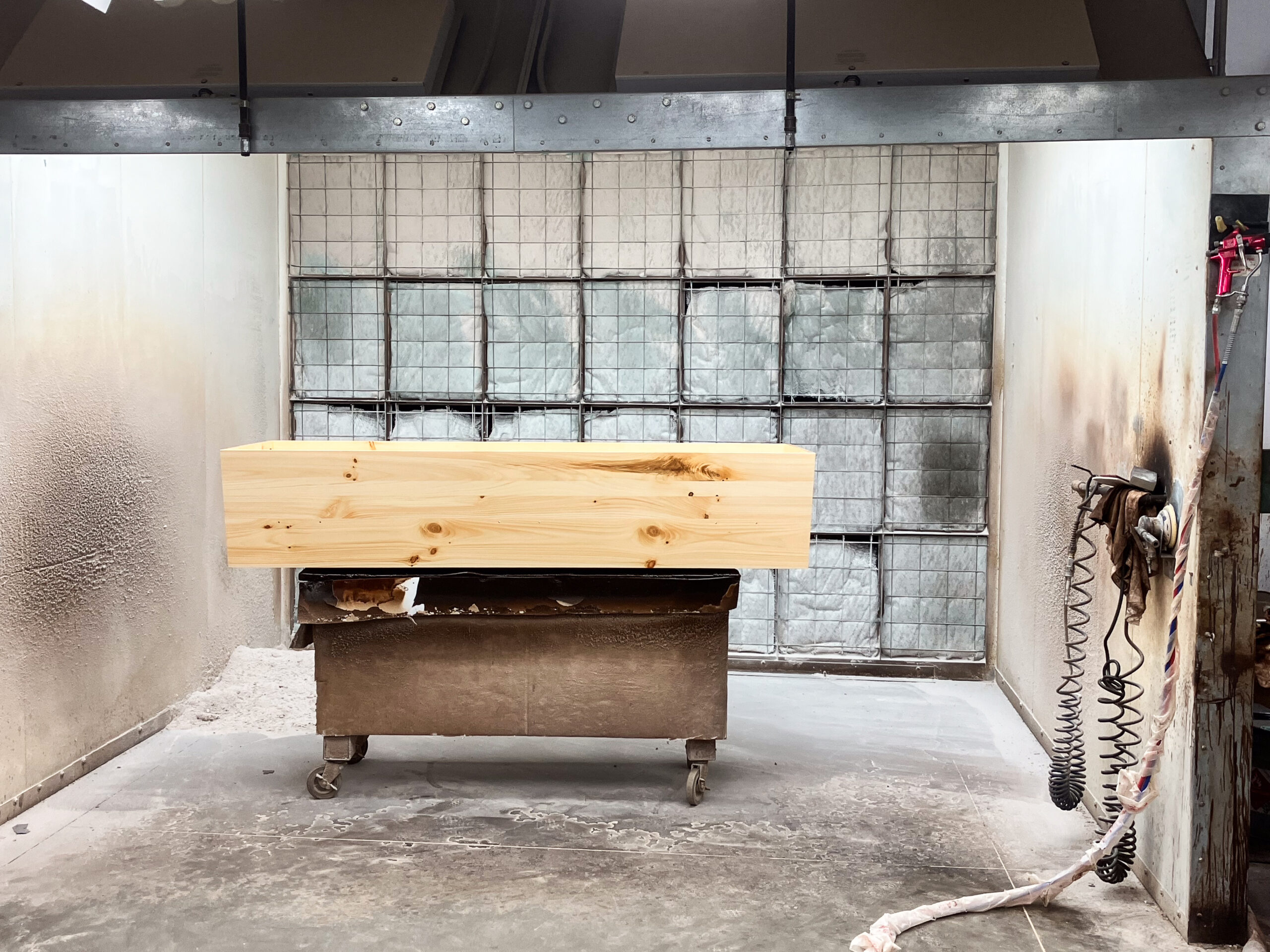
Pankowski oversees all aspects of production on the circuitous workshop floor, and can identify by eye where boards moving their way through originated. He points out lighter tones that range through black walnut of Wisconsin and Missouri. Iowa’s distinguishes itself from all others by richness of its depth, and the incomparable hardness of central Iowa’s oak dulls blades quicker than any other wood. The whiteness and clarity of pine harvested from the monks’ own land is easily recognizable in contrast to pine sourced from other areas.
For Brother Joseph, it’s hard to believe the growth of this work. From the production facility’s modest beginnings in the monks’ barns to the far reaching ties maintained through prayer and memorial tree plantings for those buried in Trappist Caskets and their families—the span is remarkable.

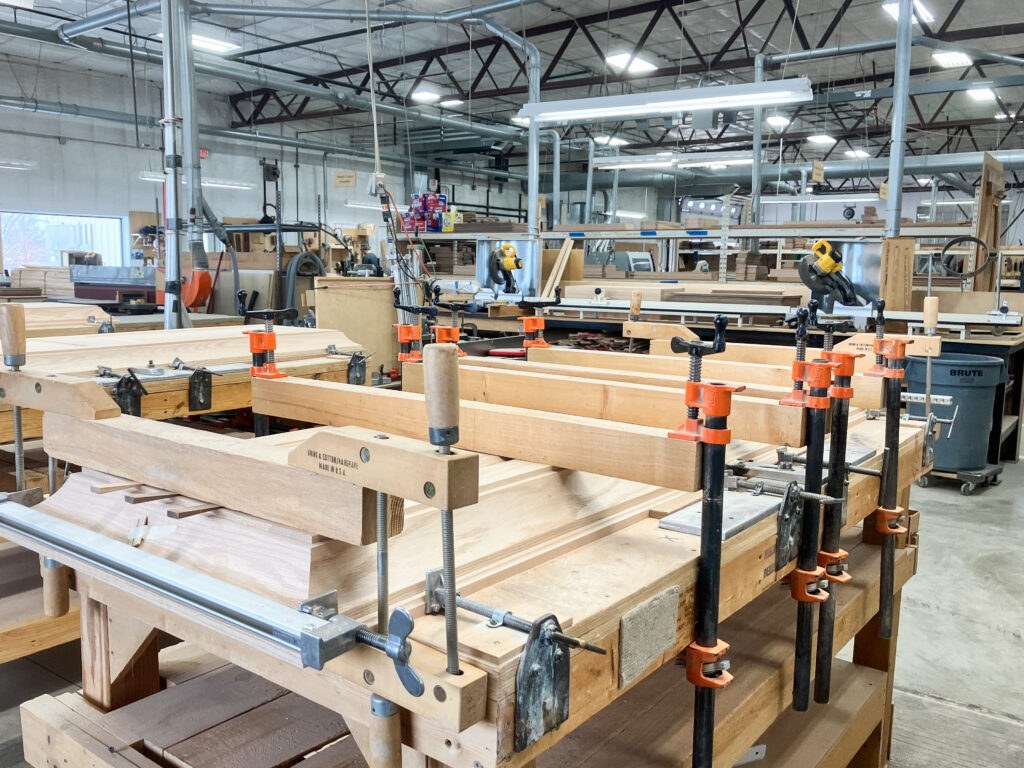
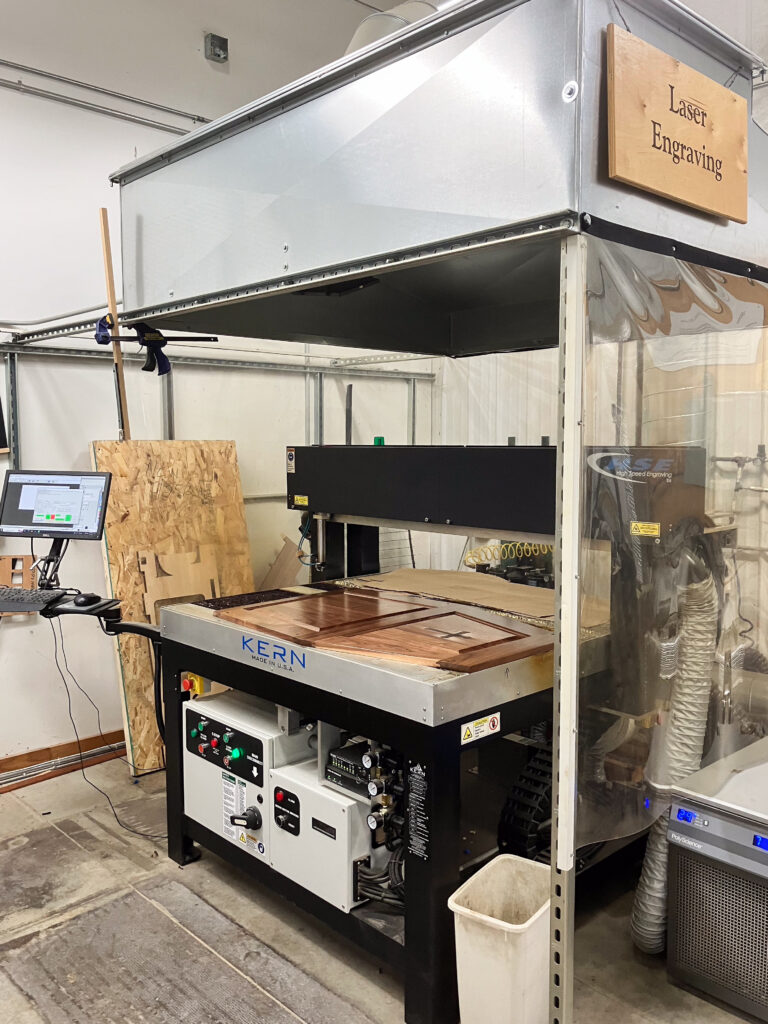
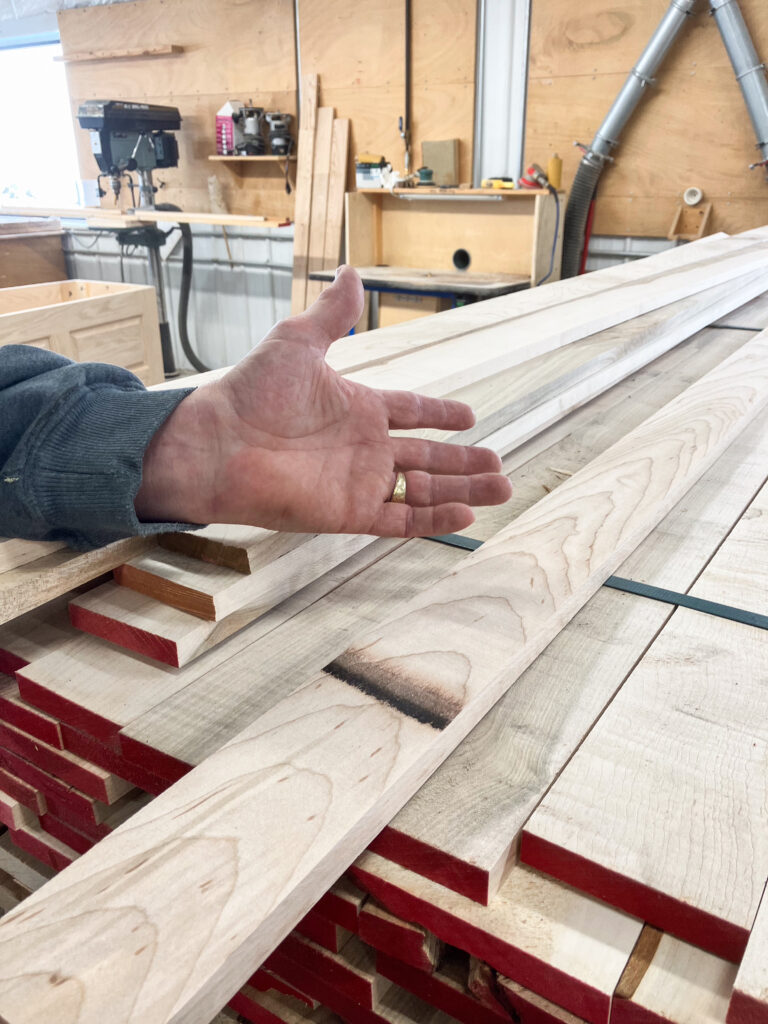
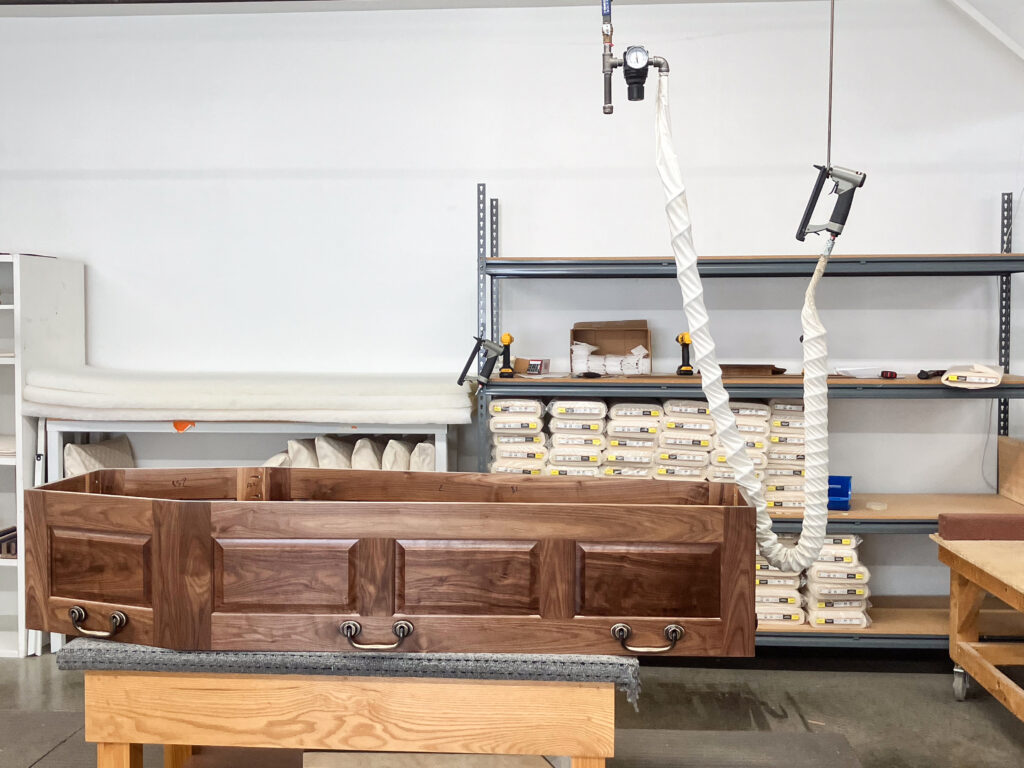
Brother Joseph, who began in those barns in 2006 and continues to work in varied roles from woodworking to upholstering in the new facility completed in 2007, recalls how cramped and dusty the barns were. He stresses how critical the employment of nearby community members is now — to meet the high demand for their caskets and to ensure the monks’ freedom to maintain the rhythm of monastic life.
The monks’ concern for land stewardship led Brother Joseph to pursue the hire of their full-time forester, John Schroeder, six years ago. Schroeder is initiating large scale prairie restoration and reforestation projects which prioritize the needs of New Melleray Abbey’s land and creeks lying on the cusp of Iowa’s Driftless region. It is an area spared by the grinding weight of glaciers moving out of the midwest around 12,000 years ago. This land’s delicate ecological balance and exceptionally rich soil are responsible for traits found in the trees that grow here.
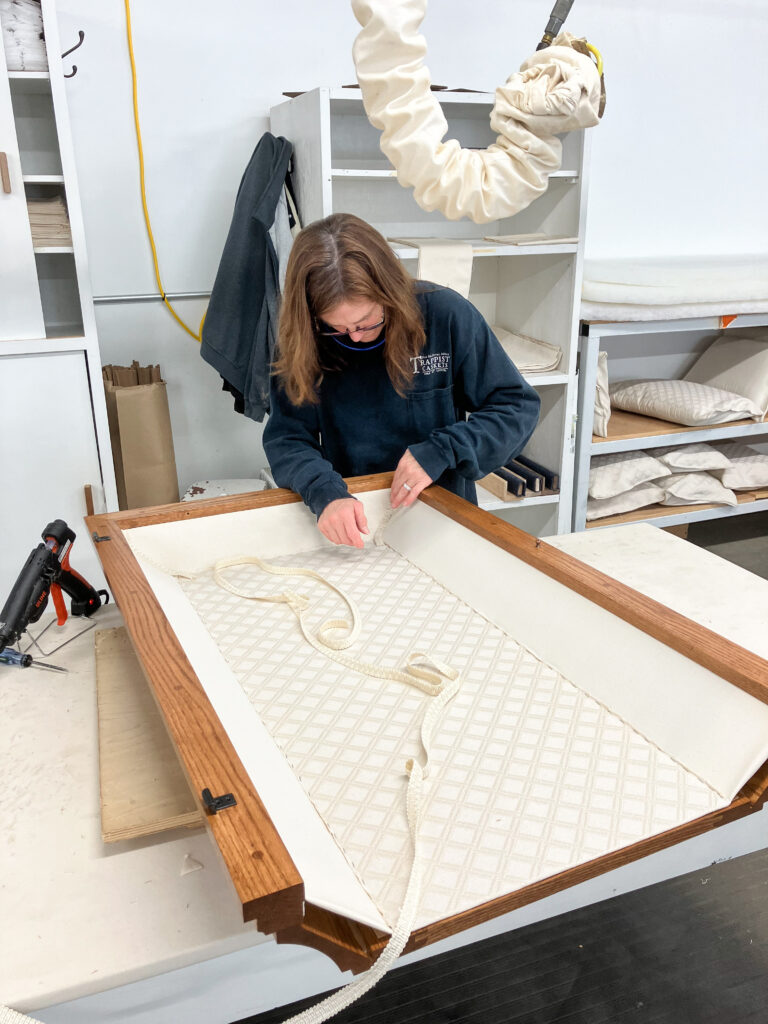
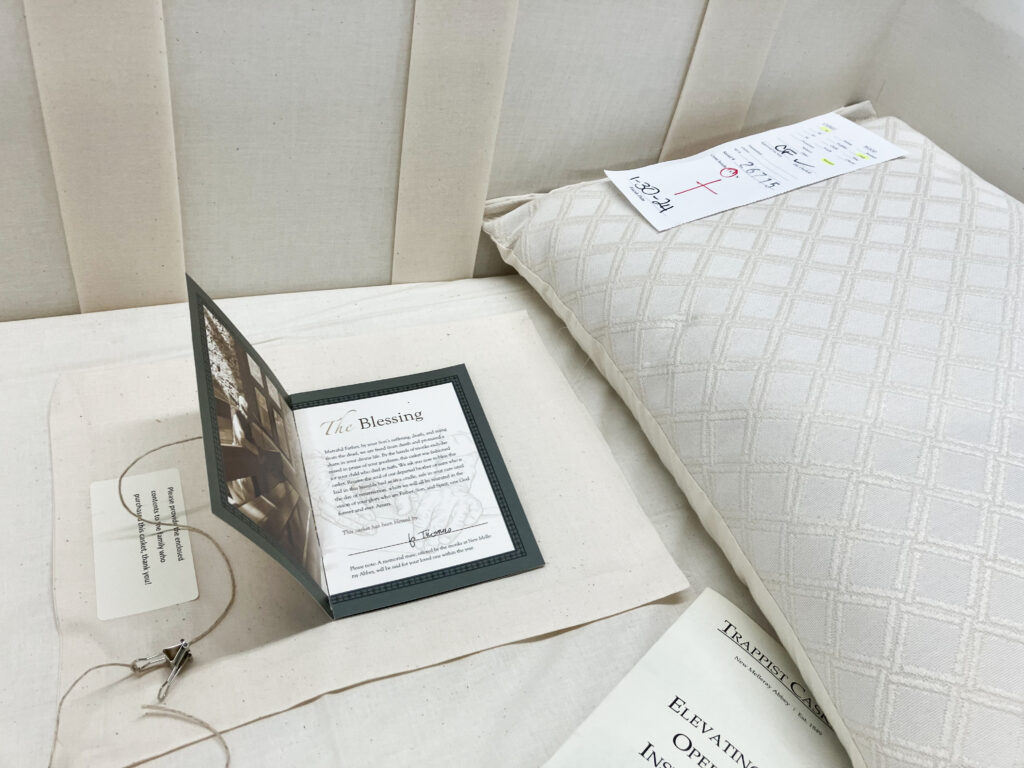

Among the most grateful customers Trappist Caskets serves are parents who must bury their children. The monks offer these caskets free of charge. Funeral homes and hospitals are quick to connect families in these tragic circumstances to the monks. The Federal Trade Commission’s Funeral Rule ensures that consumers are not limited to caskets offered by funeral homes for purchase and use, and anyone is free to contact Trappist Caskets, whose staff is always ready to guide families through meeting needs.
Trappist Caskets’ employees can relate to this devastating experience. Production Manager Paul Pankowski and his wife lost a premature baby, and his first-hand knowledge infuses compassion in every step of the production process. His three-decade long experience within strict quality parameters of the custom kitchen cabinetry business prior to working at Trappist Caskets also informs his approach to all he does.
While the end goal of both industries is perfection, his purpose, as well as all who work at Trappist Caskets, is not to turn a profit, but rather offer an encounter with beauty and consolation during a time of grief.
